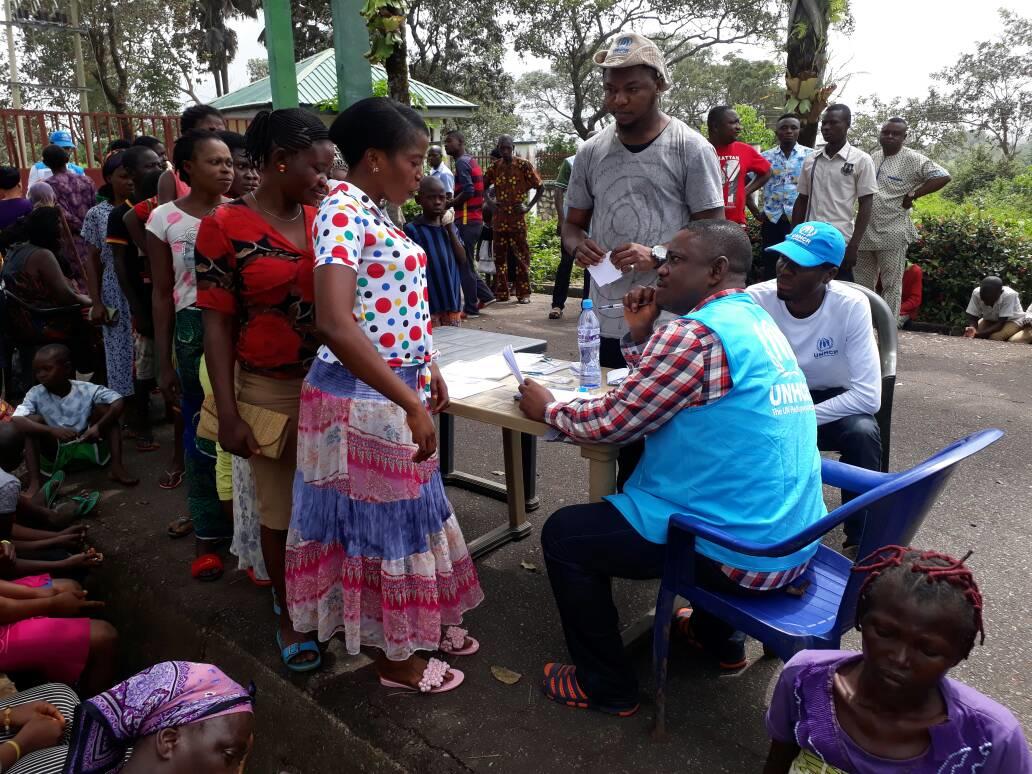The short road home to Lofa county
The short road home to Lofa county

BAIDU, Sierra Leone, April 26 (UNHCR) - The road home for Liberian refugees in Sierra Leone just got a whole lot shorter. Starting this week, UNHCR is repatriating refugees to Lofa county through a more direct route that will more than halve the travelling time to Liberia's largest area of return.
On Monday, the UN refugee agency transported 462 Liberian refugees on the first return convoy from Sierra Leone to Liberia's Lofa county through the border crossing point at Baidu. Travelling on recently rehabilitated roads, the 30-truck convoy will take two days instead of making the usual five-day detour through the crossing at Bo Waterside.
"It is more than an honour to participate in today's convoy," said Ibrahima Coly, who heads UNHCR's sub-office in Kenema, eastern Sierra Leone.
"Lofa is a key element in the success of the return of Liberian refugees in Sierra Leone. This convoy is a big step for both the refugees and UNHCR."
UNHCR currently assists about 49,000 Liberian refugees in eight camps in Sierra Leone. Just over half of them hail from Lofa county in northern Liberia, where fighting intensified in 2002. The 14-year Liberia conflict ended in August 2003, but the county was one of the last to be declared safe by Liberia's National Security Assessment Committee for Resettlement in February this year.
Many of the refugees have witnessed gross atrocities committed by rebels who invaded Lofa. Stories of torture and rape are common. But despite the horrors they experienced, the refugees are eager to return to their small county far from the conveniences of the Liberian capital, Monrovia.
Since February, UNHCR and its partner, the German Technical Cooperation (GTZ), have organised three convoys from Sierra Leone to Lofa. The average size of these convoys - over 300-strong - has been consistently bigger than convoys to other parts of Liberia.
Among Monday's returnees was Reverend Henry T. Nyorkor, the former principal of Foya Central High School in Lofa county. He was travelling with nine family members on the heels of seven others who had returned to Liberia earlier this year.
"A refugee's life is not a great life, but for some time, we had no other alternative," he said. "It is paramount to return now as leaders and teachers to rebuild our country."
While in exile, Nyorkor was the Principal of the secondary school in Gondama refugee camp. For this, he earned 75,000 Leones (approximately US$25) per month. He returned with little money to rebuild his house, which was completely destroyed. Regardless, he plans to go to the bush and chop branches, making a roof with the plastic sheets that he will receive from UNHCR as part of his reintegration in Liberia. He hopes to continue working at Foya Central High School once he is settled, but is ready to do whatever it takes to make a new life for his family.
A total of 3,889 Liberian refugees have returned from Sierra Leone with UNHCR assistance since October last year while thousands of others have returned on their own. The agency plans to continue the repatriation through the year, with a short hiatus during the torrential rainy season in the summer months. The rain, combined with poor road conditions, will make the journey too risky to attempt. But until then, UNHCR will continue to repatriate those refugees who wish to do so.
By Rachel Goldstein-Rodriguez
UNHCR Sierra Leone








